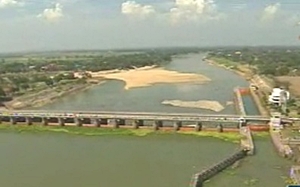BANGKOK, May 4 – In an attempt to avert a repetition of the 2005 drought crisis, the Industrial Estate Authority of Thailand (IEAT) is closely monitoring the drought in the East, coordinating with concerned agencies to ensure adequate water supply for the eastern industrial estates, IEAT Governor Veerapong Chaiperm said on Friday.
The governor said the water level in three reservoirs in the east dropped to 50 per cent of their capacity in April this year, similar level to that in April 2004 prior to the 2005 drought crisis when the water level fell to only 15 per cent of the reservoirs’ capacity.

The industrial estate authority is coordinating with the Royal Irrigation Department and Eastern Water Resources Development and Management (EASTW), suppliers of raw water for the industrial sector, to handle the situation to ensure enough water supply to five eastern industrial estates – Map Ta Phut, Padaeng, Hemaraj Eastern, Asia and RIL in the eastern province of Rayong.
IEAT plans to seek funds from the Ministry of Industry to build more reservoir under a three-year project being studied, he said.
Five industrial estates use about 230,000 cubic metres per day. Operators need production plans to suit the water situation and water recycle and water production from sea water are being considered.
Mr Veerapong said after the rainy season ends, the water level in reservoirs will be assessed whether more rain-making operations are needed in the area.
Meanwhile, Industry Minister Pongsawat Svasti said the water level measured on April 20 was higher than during the 2004-2005 water crisis and more water flowed into a reservoir, so raw water is adequate for production in industrial estates.
In another attempt to fight drought, the Ministry of Agriculture and Cooperatives has been speeding up making artificial rain.
Supatra Thanaseniwat Permanent Secretary for Agriculture said the rainmaking operation started Feb 20 and since then to April 30, the Bureau of Royal Rainmaking and Agricultural Aviation run 1,341 flights, making rain in 56 provinces with the highest daily rainfall recorded at 141.5 millimetres.
In April alone, 781 flights made artificial rainfalls in 55 provinces.
The artificial rainmaking operation continues to increase the amount of water in reservoirs in this year’s dry season.
Regarding the amount of water in the country’s reservoirs, Kitti Tancharoen, Assistant Governor for Hydro Power Plants of the Electricity Generating Authority of Thailand (EGAT) said as of May 2, EGAT reservoirs contain 59 per cent of their capacity or 36 million cubic metres, six per cent higher than the amount of water recorded on the same period last year.
Water in the reservoirs is enough for agriculture ahead of the rainy season if there is no further rainfall.
He said a subcommittee, following up and analysing the water situation in the Chao Phraya Basin agreed to release more water from the Bhumibol and Sirikit Dams to suit actual water use and to supply water to farmlands in the Chao Phraya project from April 29 to May 6.




